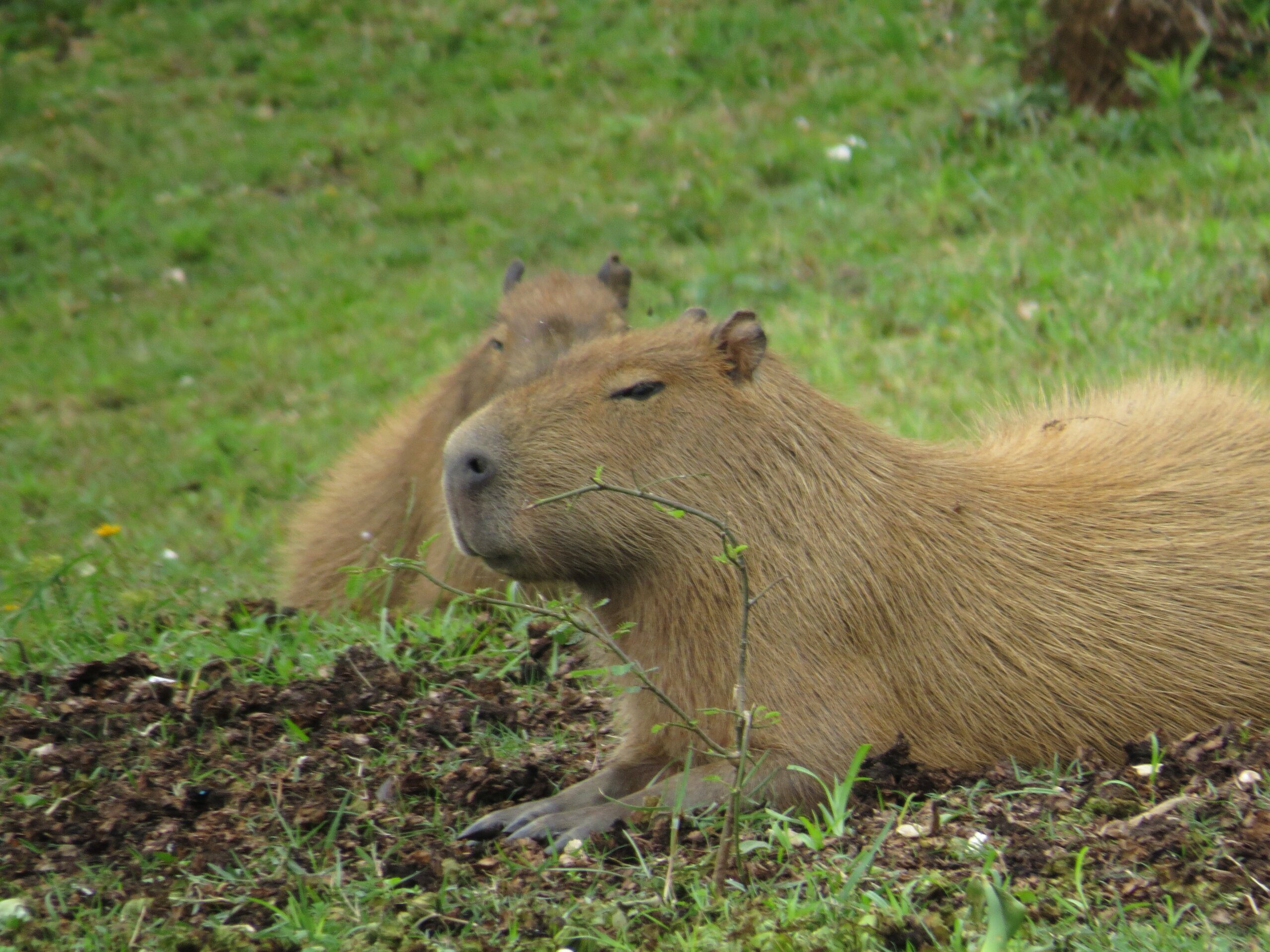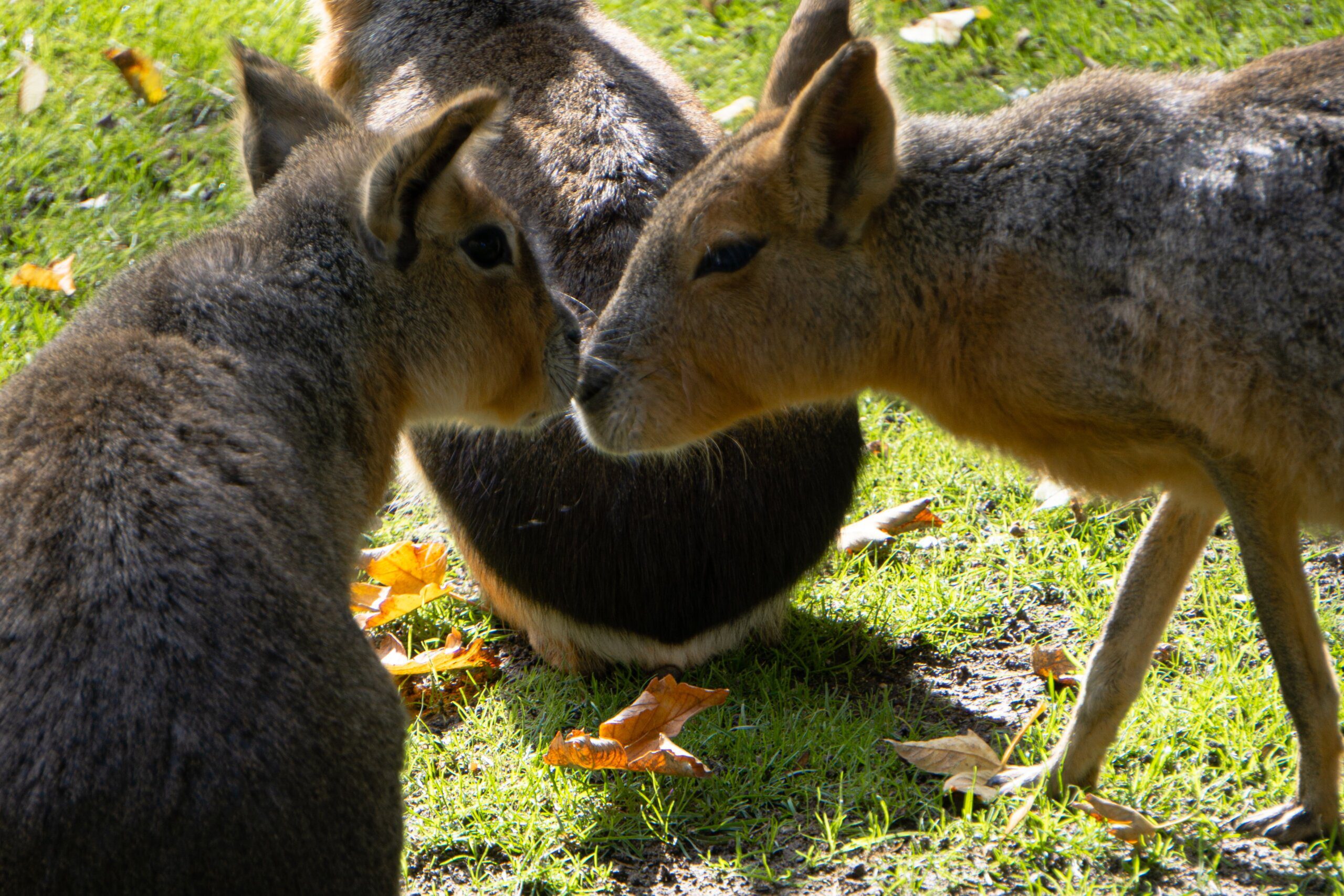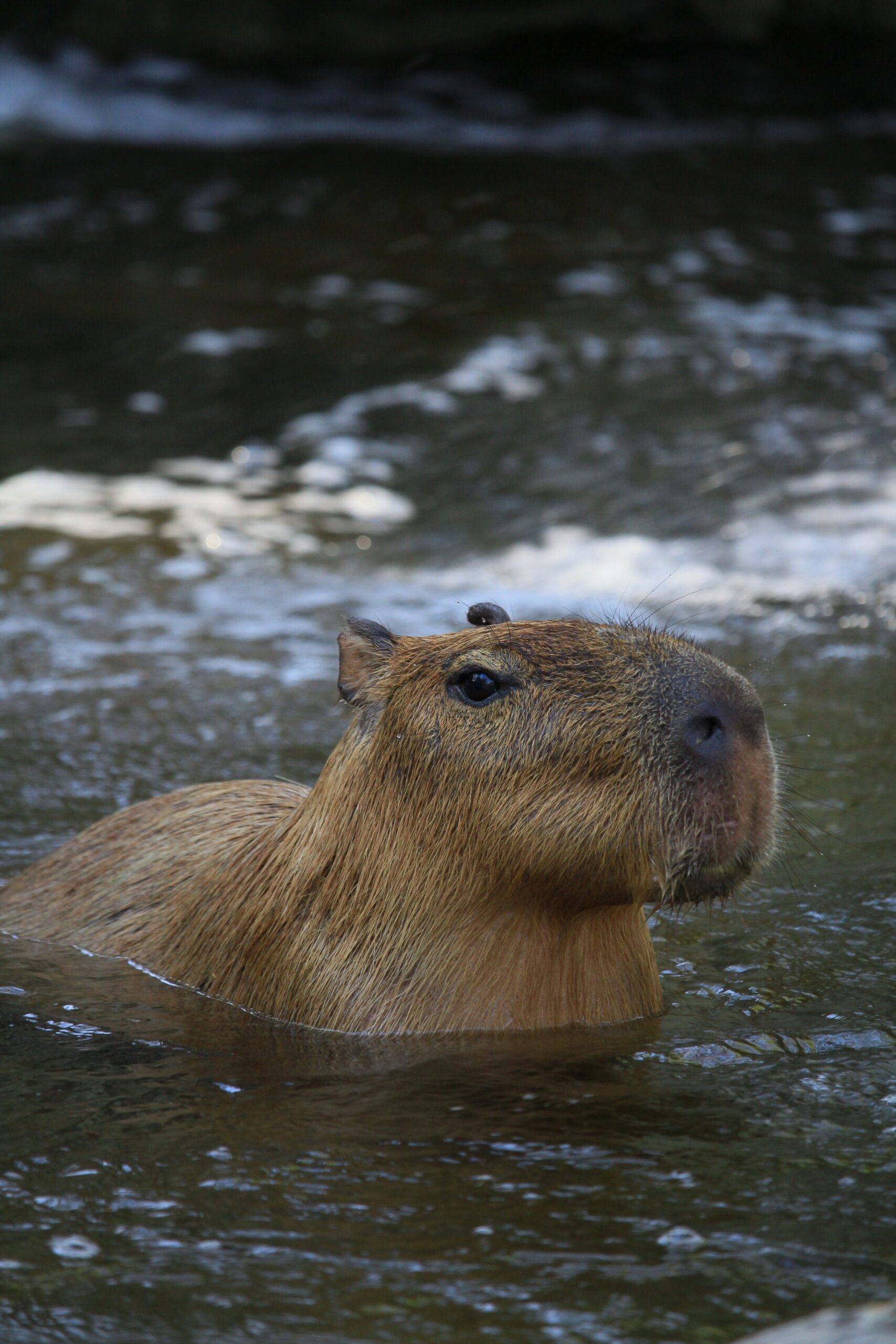Imagine stepping into a world where giant, gentle creatures roam freely, their adorable faces and large, expressive eyes captivating your heart. Welcome to the enchanting world of capybaras! These fascinating creatures, often referred to as the world’s largest rodents, are found in South America and have captivated the attention of animal enthusiasts worldwide. From their unique social dynamics to their surprising swimming abilities, the world of capybaras is truly amazing. So, pull up a chair and prepare to be amazed by these incredible creatures!

Capybaras as the Largest Rodents
Introduction to Capybaras
Capybaras, scientific name Hydrochoerus hydrochaeris, are fascinating creatures known for being the largest rodents in the world. With their unique appearance and interesting behaviors, these gentle giants capture the hearts of many animal enthusiasts. Native to South America, capybaras are a true wonder of nature.
Physical Characteristics
Capybaras possess a variety of physical characteristics that set them apart from other rodents. They have a stout and sturdy body, with a barrel-shaped torso and short legs. Their fur ranges in color from reddish-brown to dark brown, providing excellent camouflage in their natural habitats. Growing up to 4.4 feet (1.35 meters) in length and weighing as much as 150 pounds (68 kilograms), capybaras truly live up to their reputation as giants among rodents.
Comparison to Other Rodents
When comparing capybaras to other rodents, their size is truly impressive. They dwarf their smaller relatives like rats, mice, and guinea pigs. Although they belong to the same family as guinea pigs, capybaras far exceed their counterparts in terms of size. It’s fascinating to see the vast range of shapes and sizes within the rodent family, and capybaras undoubtedly top the list as the most colossal members.
Native Habitat and Distribution
Native Habitat
Capybaras are native to the diverse ecosystems of South America. They primarily inhabit the extensive wetlands, marshes, and grasslands that are abundant in the region. These semi-aquatic creatures are well-adapted to the humid environments, and they thrive in areas with year-round access to water. Their love for water indeed sets them apart from other rodents, making them semi-aquatic adventurers.
Geographic Distribution
Capybaras can be found in a range of countries throughout South America, including Brazil, Venezuela, Colombia, and Argentina, among others. They have successfully expanded their range due to their adaptability and ability to colonize new habitats. Whether it’s the flooded savannas of the Pantanal or the lush rainforests of the Amazon, capybaras have managed to carve out their niche in various regions across the continent.
Influence of Habitat on Behavior
The capybara’s native habitat significantly influences their behavior. With easy access to water, capybaras spend a considerable amount of time swimming and wading in rivers, lakes, and ponds. This aquatic lifestyle not only provides them with a means of cooling off in the hot South American climate but also offers protection from predators. Furthermore, the presence of dense vegetation near water sources enables capybaras to find shelter and hide from potential threats.

Social Behavior and Communication
Group Dynamics
Capybaras are incredibly social animals and thrive in large, cohesive groups known as herds or packs. These groups usually consist of about 10 to 20 individuals, although herds of up to 100 capybaras have been observed in certain areas. Within the group, a dominant male, known as the alpha male, leads the herd and ensures its safety. This social structure allows capybaras to cooperate in various activities and provides them with a sense of security.
Communication Methods
Capybaras communicate through a variety of methods, including vocalizations, body language, and scent marking. They can emit a range of vocal signals, such as barks, whistles, and purrs, to communicate with herd members. Additionally, capybaras use non-verbal cues, such as ear and tail movements, to convey their intentions and emotions. Scent marking plays a crucial role in communication, as capybaras have scent glands on their faces that they use to mark territory and establish social bonds.
Grooming and Scent Marking
Grooming serves as an essential aspect of capybara social behavior. Within the herd, individuals groom each other, reinforcing social bonds and maintaining cleanliness. This behavior not only helps with parasite control but also contributes to the overall well-being of the group. Additionally, capybaras engage in scent marking to communicate dominance and mark their territories. By rubbing their scent glands against trees and other objects, they leave behind a scent signature for other capybaras to detect.
Diet and Feeding Habits
Herbivorous Diet
Capybaras are strict herbivores, subsisting on a diet comprised mainly of plant material. Their digestive systems are well-adapted to process large quantities of vegetation, including grasses, aquatic plants, and fruits. Interestingly, capybaras possess a unique type of digestion called hindgut fermentation, which enables them to extract nutrients from tough plant fibers by fermenting them in their large cecum.
Preferred Food Sources
While capybaras can consume a variety of plant species, they do have preferences when it comes to food sources. They particularly enjoy feeding on aquatic plants, such as water hyacinths and water lettuce, as well as grasses found near water bodies. These plant varieties provide capybaras with a high water content, which is crucial for their semi-aquatic lifestyle and overall hydration.
Adaptation to Aquatic Environment
The ability to adapt to an aquatic environment is a remarkable trait of the capybara. They have partially webbed feet, which aid them in swimming and navigating through water with ease. Capybaras are also capable of holding their breath underwater for several minutes, enabling them to forage for food or escape from predators effectively. This adaptation, combined with their semi-aquatic behavior, allows capybaras to thrive in their natural habitats.

Capybara Reproduction
Mating Rituals
Capybaras engage in elaborate mating rituals to attract mates and establish pair bonds. During the breeding season, which typically occurs in the rainy months, males engage in intense vocalizations and aggressive competitions with other males to claim a female. The dominant male will assert his dominance by marking the female with his scent. Once the pair bond is established, they will mate and remain monogamous for an extended period.
Gestation and Birth
After a gestation period of approximately 150 days, the female capybara gives birth to a litter of usually four to eight offspring, known as pups. These newborns are precocial, which means they are born with open eyes and are capable of independent movement shortly after birth. The female capybara provides care and protection for her pups, who rely on her guidance and nourishment during their early stages of life.
Maternal Care
Capybara mothers exhibit exceptional maternal care, always keeping a watchful eye on their pups. They are highly protective and nurturing, creating a sense of security for their young ones. The mother capybara will nurse her offspring until they are weaned and teach them important survival skills. This strong maternal bond contributes significantly to the successful development and growth of capybara pups.
Predators and Defense Mechanisms
Natural Predators
Despite their large size, capybaras face threats from a variety of natural predators. In their native habitats, these gentle giants encounter jaguars, pumas, caimans, anacondas, and large birds of prey, such as the harpy eagle. However, due to their social nature and keen senses, capybaras are often able to detect potential danger and have a better chance of evading their predators.
Hiding and Camouflage
When faced with a threat, capybaras employ different defense mechanisms to ensure their survival. Their first line of defense is to seek shelter and hide within dense vegetation or water, taking advantage of their excellent camouflage abilities. By blending in with their surroundings, capybaras become difficult for predators to spot, increasing their chances of escaping harm.
Warning Signals
Capybaras rely on their strong sense of hearing and sight to detect danger in their environment. When they sense a potential threat, they emit a series of vocalizations, alerting nearby herd members to the presence of danger. These warning signals allow the herd to react quickly and take evasive action. The cooperation and vigilance within the group serve as an effective defense strategy against predators.
Capybaras and Humans
Cultural Importance
Capybaras play a significant role in the cultures of many South American countries. Indigenous tribes have historically revered capybaras and incorporated them into rituals and folklore. Today, capybaras continue to be admired and celebrated for their unique characteristics, often considered symbols of water and abundance. Their iconic status in South American culture highlights the deep connection between humans and these remarkable animals.
Interaction with Livestock
In some regions, capybaras coexist with livestock, such as cattle and horses. Despite their herbivorous diet, capybaras have been known to consume crops and compete for grazing land with domestic animals. This occasional interaction with livestock can lead to conflicts between humans and capybaras, as farmers may regard them as pests. However, efforts are being made to promote peaceful coexistence and develop strategies to mitigate these conflicts.
Conservation Efforts
Due to their increasing interaction with humans and alteration of their habitats, capybaras face conservation challenges. Destruction of wetlands, hunting, and habitat fragmentation pose significant threats to their populations. Recognizing the importance of preserving these extraordinary animals, conservation organizations and government agencies work together to protect capybaras and their habitats. Efforts include raising awareness, conducting research, and implementing conservation measures to ensure the long-term survival of capybaras in the wild.
Unique Capybara Facts
Semi-Aquatic Lifestyle
As semi-aquatic animals, capybaras spend a substantial amount of time in the water. They have been known to swim and dive gracefully, using their webbed feet to navigate through rivers and lakes. This unique and impressive ability distinguishes capybaras from other rodents and showcases their adaptation to their aquatic environments.
Ability to Hibernate
Capybaras have fascinating patterns of dormancy, known as aestivation, during periods of extreme heat and drought. By entering a state of hibernation, they conserve energy and reduce water loss. During this time, capybaras build burrows near water bodies to seek refuge and escape the harsh conditions. This remarkable adaptation enables capybaras to survive in their challenging habitats.
Lifespan and Growth Rate
Capybaras have a relatively long lifespan compared to other rodents, with individuals usually living up to 8-10 years in the wild. In captivity, where they receive proper care and nutrition, capybaras can live even longer, often reaching 12-15 years of age. Additionally, capybaras grow rapidly during their first year of life, reaching a substantial size by the time they reach adulthood.
Unusual Capybara Behaviors
Dental Chattering
One unusual behavior displayed by capybaras is dental chattering. This behavior involves rapidly grinding their teeth together, creating a distinctive clicking sound. While the exact purpose of dental chattering is not fully understood, it is believed to serve as a communication signal, particularly during social interactions. It’s fascinating to observe capybaras engage in this unique behavior and witness the range of vocalizations they can produce.
Vocalizations
Capybaras are quite vocal animals and have a repertoire of vocalizations that they use to communicate various messages. From barks and whistles to purrs and chirps, each vocalization carries a different meaning and serves different social purposes. Whether it’s warning other herd members of danger or expressing their emotions, capybaras rely on their vocal abilities to convey information within their social groups.
Sunbathing
Capybaras enjoy basking in the sun, a behavior known as sunbathing. They can often be seen lying on riverbanks or in open areas, stretching out and luxuriating in the warmth of the sun’s rays. Sunbathing has multiple benefits for capybaras, including thermoregulation, parasite control, and relaxation. It’s a delightful sight to witness these magnificent creatures take a moment to soak in the sun and enjoy a peaceful moment in their natural habitat.
Capybara as Pets
Popularity as Exotic Pets
Capybaras have gained popularity as exotic pets in some regions, with individuals looking to experience the unique companionship these gentle giants offer. While their adorable appearance and friendly demeanor make them appealing pets, owning a capybara comes with significant responsibilities and challenges. It’s essential to thoroughly research and understand their specific care requirements before considering them as pets.
Special Considerations
Capybaras have unique needs that must be met to ensure their well-being as pets. Their semi-aquatic nature means they require access to water for swimming and bathing. Additionally, capybaras are highly social animals and thrive in the company of other capybaras. Providing ample space, a suitable diet, and veterinary care are critical to meeting their physical and mental needs, making capybara ownership a labor of love.
Legal and Ethical Concerns
Before considering a capybara as a pet, it is crucial to understand the legal and ethical considerations surrounding their ownership. Laws regarding capybara ownership vary by jurisdiction, and prospective owners must comply with specific regulations. Furthermore, one must consider the potential impact on wild capybara populations and carefully weigh the ethical implications of keeping these animals in captivity.
In conclusion, capybaras are truly extraordinary creatures. From being the largest rodents on Earth to their semi-aquatic lifestyle and social behaviors, these gentle giants captivate our fascination. The fascinating world of capybaras extends from their native habitats in South America to the cultural significance they hold and their interactions with humans. While they may be adored as exotic pets by some, the conservation of capybaras and their habitats remains of utmost importance. Through efforts to protect and appreciate capybaras, we can ensure the long-term survival and continued admiration of these remarkable animals.



